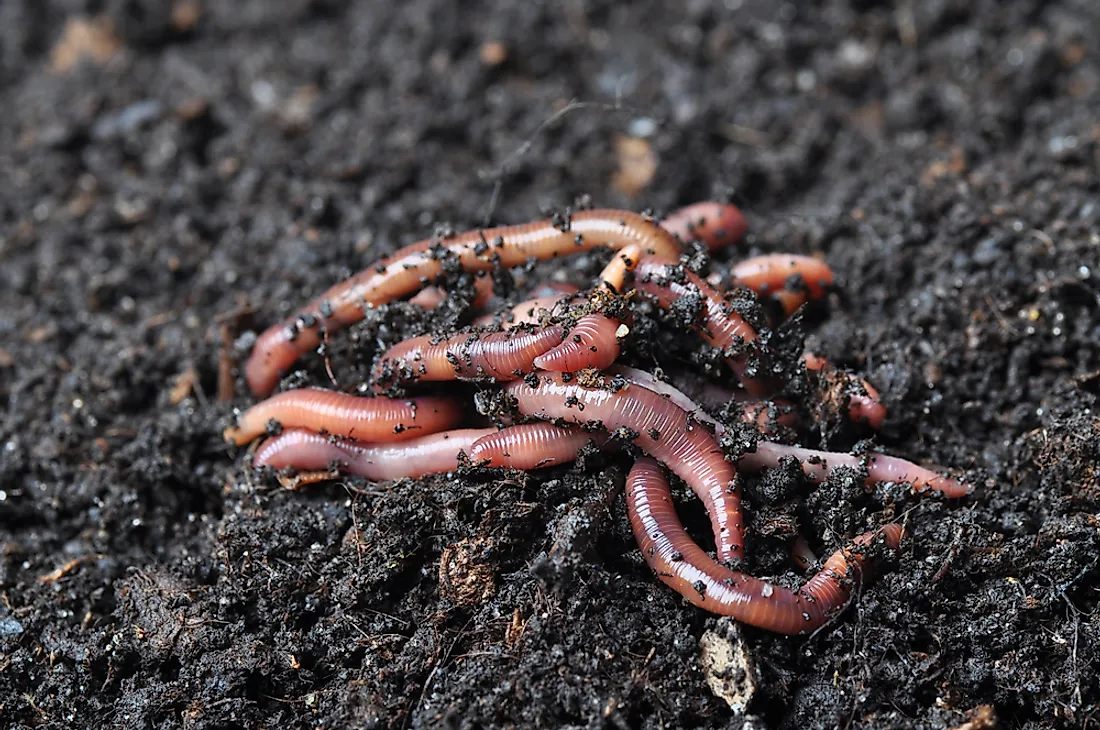What Kind of Animals Live In The Soil?

Soil is the topmost layer of the Earth that sustains plant life. In the soil, there are many things such as organic matter and animals (both vertebrates and invertebrates). In the soil, the animals interact with other animals, plants, and the soil itself in different ways. However, due to a lack of information on the topic, the exact manner of interaction between them is not well known.
Despite this general lack of data, it is known that there is a relationship between animals living in soil and plants. While animals depend on these dead plants as a source of energy, the plants depend on the animals for decomposition so that the cycle of life continues. In this cycle, the soil benefits by being enriched with minerals and nutrients from dead and decaying plants and animals. In return, animals and plants get a safe and nutrient-rich environment to thrive. In addition to decomposition, the animals are also crucial to the soil as they help in mixing, aerating, and loosening the soil particles. These three processes are achieved through activities such as burrowing, the release of chemicals, and the release of waste.
Animals That Live in Soil
Soil animals are classified based on body sizes, feeding tactics, habitat within the profile of the soil, movement methods in the soil, and the time an animal spends in the soil.
Generally, soil animals are small in size and have simple appendages. Their bodies have a length ranging anywhere between 0.00008 inches to more than eight inches. Within this range of length, three sub-classifications are obtained. These are mesofauna (0.0008 to 0.4 inches), microfauna (0.00008 to 0.0008 inches), and macrofauna (at least 0.4 inches). Microfauna includes the likes of protozoa while mesofauna includes the likes of mites, spiders, insect larvae, isopods, small millipedes, springtails, and others. Macrofauna are considerably larger than the first two subcategories and includes animals such as earthworms, larger arachnids and insects, vertebrates living in soils, earthworms, and other animals.
Depending on how long a soil-dwelling animal spends in the soil, two further categories have been identified. The first category is for those animals that spend most of their time or even their entire lives in soil such as protozoans, isopods, mites, and nematodes. The other group is for animals that spend little time in or on soil such as birds that nest on the ground.
The location of an animal within the profile of the soil brings about three subcategories: the vegetation layer above the surface of the soil (the epigeon), the organic layers (the hemiedaphon), and the mineral layers (the euedaphon). However, it is crucial to note that these are general classifications since there are plenty of microhabitats in the soil.
The method of movement also provides classifications such as burrowing animals as well as animals that use the spaces between soil particles for movement. Burrowing animals are especially common in desert areas where the surface temperatures are much higher than temperatures in the soil. Some of these desert-burrowing animals include the likes of reptiles (such as lizards), small mammals (such as foxes), and arthropods (such as termites). All these animals have to limit their daytime movement due to the oppressive heat of the desert.
Importance of Soil Animals
Most of the animals living in soil are small invertebrates that are not easily noticeable. These small animals fall in broad categories of protozoa, nematodes, worms, arthropods, and mollusks. Protozoa prefer to live in the watery regions of the soil. Despite their small size, protozoa are crucial as they decompose waste by feeding on bacteria, fungi, cellulose, and organic litter. In the soil, the millions of creatures include flagellates, ciliates, and rhizopods.
Nematodes are slightly different as their feeding habits differ. Some of them eat bacteria, others are parasites, while others have different feeding habits. While they do not play a direct role in decomposition, nematodes serve as an important food source.
Worms and mollusks play a similar role. Worms affect the structure and characteristics of the soil. Worms are responsible for mixing and ingesting decaying matter in the soil and increasing the fertility of the soil. Worms are also crucial since they play a role in improving the drainage, stability, and fertility of the soil. Mollusks, which include snails and slugs, eat a wide range of things, such as the vegetation on the soil surface. Arthropods include the likes of crustaceans, arachnids, myriapods, and insects. While most crustaceans are aquatic, some of them, such as wood lice, play a vital role in decomposing dead plants and animals by eating invertebrate carrion, dead plant material, and other things.
Vertebrates also play varying roles in the soil. For example, vertebrates such as burrowing rodents (like pocket gophers, ground squirrels, and kangaroo rats) are crucial in mixing soil contents, which improves the overall texture and quality of the soil. On the other hand, some vertebrates (such as ground-nesting birds) do not play such a crucial role since they spend little time in the soil. However, it is quite difficult to quantify the effect that an animal has on the soil.
Effect of the Soil on Animal Distribution
Several factors of the soil affect how the animals within it are distributed. These factors include the structure and texture of the soil, the soil moisture, aeration, and the chemical composition. For example, burrowing animals prefer soil that is not too fine while smaller animals prefer to live in places where moisture is high. For animals living on the surface of the earth, the distribution of animals is affected by the vegetation cover, which grows on the soil.











